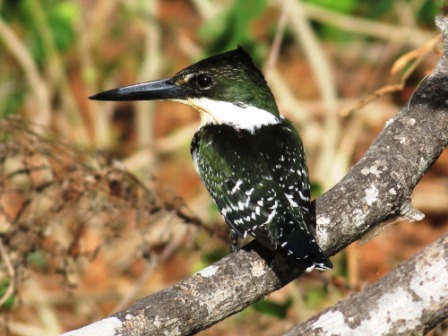This article was written by interpretive guide Mary Thorne.
Today I got to ride on a mountain lion. Well, I didn’t really ride on a mountain lion; I sat on a mountain lion. I was giving a private sculpture tour to a group of 33 bicyclists. When we got to the mountain lion sculpture I figured they could hear and see me better if I climbed to the top of the rocks. Once up there, I couldn’t resist the temptation to sit on the sculpture.
Sitting atop a real mountain lion would never happen except in a cartoon or fantasy world. Mountain lions are extremely elusive and solitary animals and very few people have ever seen them in the wild. Their natural instinct is to avoid human interaction. It is amazing so few mountain lions are seen since it is the widest ranging land mammal in the western Hemisphere, aside from humans.
It once roamed from the Canadian Yukon territory, into all of the lower forty eight states and down into South America. Early explorers called it leon (lion) and gato monte (cat of the mountain), later shortened to catamount. Since it lives in such diverse habitats why it is called a mountain lion? A folktale tells of fur traders buying pelts from natives and wondering why the furs had no manes like African lions. The natives jokingly said the male lions lived far away in the mountains.
Any animal that exists in different countries, with different languages, and different cultures is bound to have many common names. The mountain lion has so many common names that it is listed in the Guinness book of world records as having more names than any other animal.
The scientific name of the mountain lion is Puma concolor. In Latin this means cat of one color and in the Peruvian Quechua language it means powerful. It’s strong muscular legs allow it to jump 15 feet in the air. Even the muscles of its jaws are structured to allow for an extremely powerful bite. Pumas have no natural enemies, except of course for us humans. Mountain lions do not roar like a lion. Instead, due to the structure of their voice box, they hiss, growl purr and scream. That explains why one of its names is the screamer.

Come take a walk on our Forest Sculpture Trail to learn more about animals native to the Rio Grande Valley.










